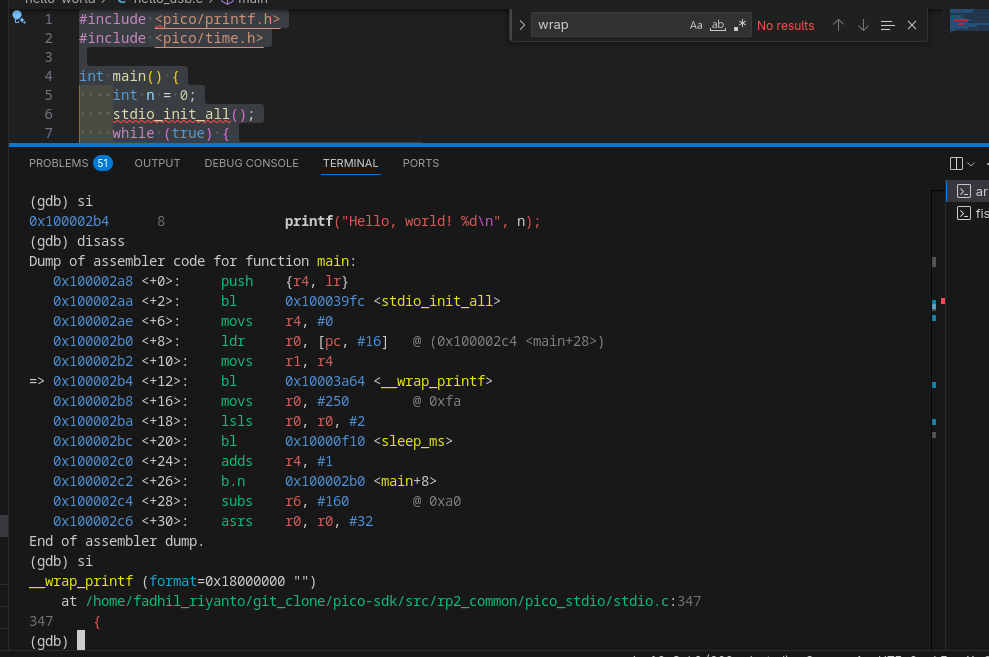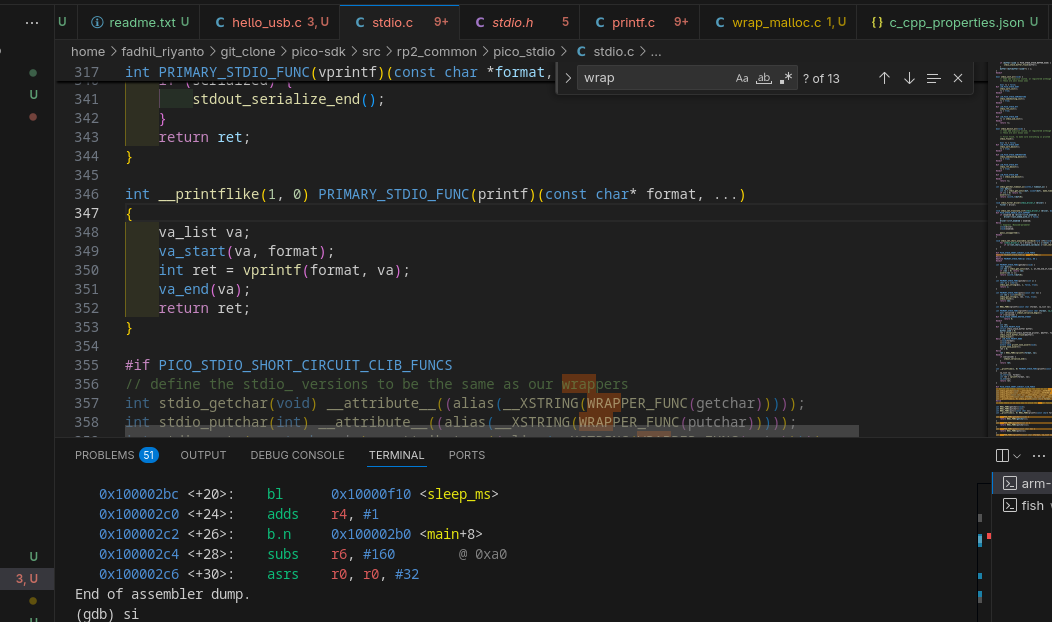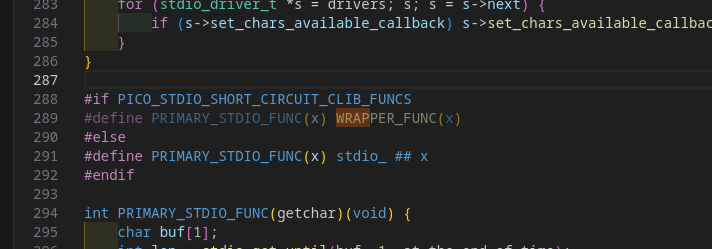Analysis: How printf Works on RP2040 at a Low Level#
In order to understand how printf works in the RP2040 UART bridge, let’s compile a simple program, build it with debug symbols, and then run GDB.
Consider this very simple Hello World example:
#include <pico/printf.h>
#include <pico/time.h>
int main() {
int n = 0;
stdio_init_all();
while (true) {
printf("Hello, world! %d\n", n);
sleep_ms(1000);
n = n + 1;
}
}
Analysis#

See?
=> 0x100002b4 <+12>: bl 0x10003a64 <__wrap_printf>
It calls __wrap_printf, which means the backend uses -Wl,--wrap=printf internally. If we refer to /home/fadhil_riyanto/git_clone/pico-sdk/src/rp2_common/pico_stdio/stdio.c:347:

The signature is different. This function has the signature:
int __printflike(1, 0) PRIMARY_STDIO_FUNC(printf)(const char* format, ...)
So, what exactly happens?
Result#
Let’s look at stdio.c line 289:

When the macro PICO_STDIO_SHORT_CIRCUIT_CLIB_FUNCS is active, we replace the function name by WRAPPER_FUNC(x), not stdio_printf.
After that, let’s jump into the pico-sdk compiler.h for a very clear definition.
So, basically, this function:

calls __wrap_printf.
Make sense?